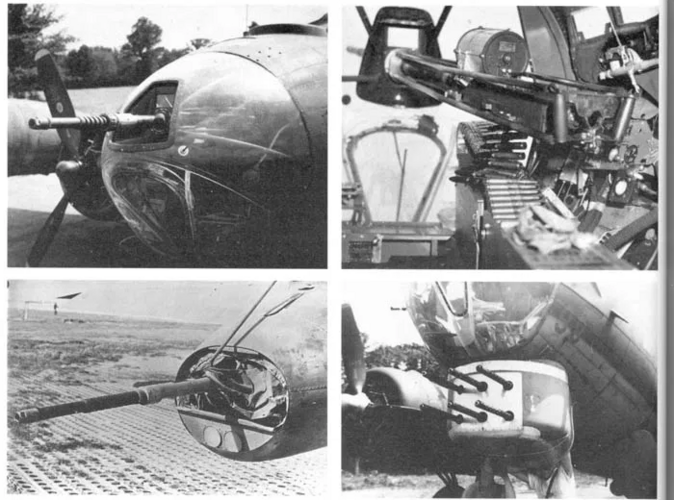Hi Ewen,
I think this is the one you were referring to. An early B-29 modified with manned turrets and two single chin mounts. No 20mm. All 0.5"
Project S68 was an effort to evaluate the operation of manned turrets on the Boeing B-29 Superfortress in the event of difficulties with the General Electric remote turret system. A single airframe…

inchhighguy.wordpress.com
Thanks a lot for the link!
The chin mounts are really odd indeed - I'd imagine they must have had a lot of drag.
The other mounts were more conventional, but I would think they there were not pressure tight. The dorsal turret certainly looks just like the B-17's, so the implication is that when equipped with these turrets, the B-29 could not be pressurized.
As far as I know, the General Electric remote control system wasn't actually all that good. Over on ww2aircraft.net, a while ago some documents were posted that showed that the USAAF found the alignment of sights to the guns difficult to establish with the required precision, as any twisting of the fuselage would mis-align them relative to each other. Additionally, they were critical of the approach of directly tracking the apparent position of the enemy aircraft purely manually, which was difficult to do with the smoothness required by the analog computer to calculate valid firing solutions. The report argued that the more conventional approach of controlling the tracking rates (azimuth and elevation speeds) was superior in that regard.
With regard to pressurization, I don't actually know how important this turned out as my impression is that when enemy aircraft could be expected to be encountered, the aircraft was depressurized anyway to avoid the risk of explosive decompression. At least later in the war, the inbound flight was made at low altitude anyway, to reduce the strain of the engines which were less taxed by climbing later in the flight when a lot of fuel had already been consumed and the aircraft was lighter. Without looking it up, it might also be that cruise climb or step climb techniques were employed. Not sure about the return flight, but letting down once outside the range of enemy fighter would probably have been possible for a non-pressurized B-29 variant without undue impact on its operational capabilities.
By the way, the B-29 documents posted on ww2aircraft.net also showed that the elimination of (almost) the entire armament was an option considered even before the B-29's combat experience showed that the bomber's heavy weight made the ambitious high-altitude long-range attack profile the USAAF used very demanding. Accordingly, General Curtiss LeMay probably could rely on a very solid and professional assessment of the pros and cons of the armament removal when he took his famous decision.
Regards,
Henning (HoHun)


 inchhighguy.wordpress.com
inchhighguy.wordpress.com

inchhighguy.wordpress.com

inchhighguy.wordpress.com
